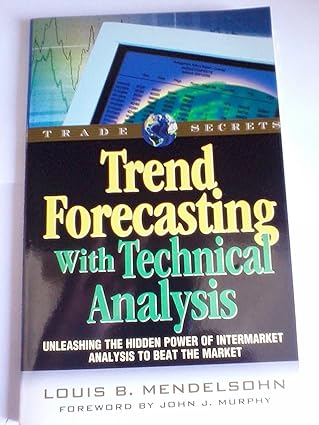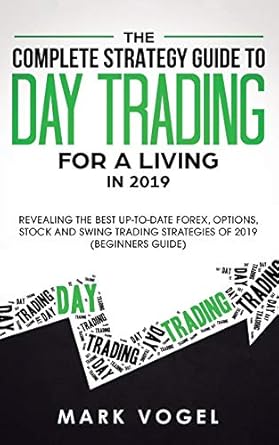INTRODUCTION
Ever wondered why, despite all your planning and financial knowledge, you still make poor money decisions? You’re not alone—and Carl Richards is here to explain why.
Welcome to the world of “The Behavior Gap”—a brutally honest yet deeply empathetic book that dives into the psychology behind our bad financial choices. Written by Carl Richards, a Certified Financial Planner™ and columnist for The New York Times, this book doesn’t just talk about money—it talks about us, and the behavioral pitfalls we fall into again and again.
And here’s the kicker: it’s not about needing more information—it’s about understanding ourselves better.
👉 Grab your copy of The Behavior Gap here and get ready to rethink your entire financial approach.
What Is “The Behavior Gap”?
Let’s start with the term itself. The “Behavior Gap” refers to the difference between the returns investors could get and the returns they actually get—thanks to their own decisions.
For example:
- Buying high when markets are euphoric
- Selling low during panic
- Following the herd without a plan
- Chasing hot trends (remember crypto FOMO?)
- Ignoring long-term strategies in favor of short-term wins
It’s not that we’re irrational. It’s that we’re human. And Carl Richards, with his signature sharpie-drawn sketches and real-life stories, makes that painfully clear.
Meet Carl Richards: The Financial Therapist You Didn’t Know You Needed
Carl isn’t your typical financial author. He doesn’t bury you under spreadsheets and jargon. Instead, he tells stories, draws simple line-doodles, and most importantly—he empathizes.
You don’t feel judged when reading this book. You feel seen.
Carl’s approach is about behavioral finance, a blend of psychology and investing. He challenges the conventional belief that more knowledge leads to better financial behavior. Spoiler alert: it doesn’t.
What does help? Understanding your emotions, values, and the stories you tell yourself about money.
Why You Keep Making the Same Financial Mistakes
Carl outlines a powerful truth: most of us think we’re being logical, but we’re actually just reacting emotionally.
Some real-world scenarios you’ll recognize:
- You read a news headline about a market crash, so you panic and sell.
- You see friends investing in something new, so you jump in—late.
- You wait too long to invest because you’re afraid of making a mistake.
Sound familiar?
This emotional tug-of-war is what Carl calls “the behavior gap,” and it’s costing you thousands—if not more—over your lifetime.
👉 Ready to break the cycle? Order your copy of The Behavior Gap now and start transforming your relationship with money.
The Power of Simplicity in Personal Finance
One of the most refreshing parts of The Behavior Gap is Carl’s constant reminder that personal finance doesn’t need to be complicated.
We often think complexity = intelligence. But in truth, simplicity = clarity.
Carl suggests:
- Automating your savings
- Investing in low-cost index funds
- Creating a basic financial plan and sticking to it
- Ignoring market noise and media hype
These aren’t revolutionary tactics. But they’re ridiculously effective—when you stick to them.
And that’s where the magic (and the challenge) lies: discipline beats intelligence in investing. Every single time.
Key Lessons from “The Behavior Gap”
Let’s break down some of the biggest takeaways:
1. Know Thyself
Before you invest a rupee, ask yourself: What do I value? What are my financial goals? Without this clarity, you’re just reacting to the world around you.
2. Have a Plan—Then Stick to It
Carl emphasizes that a good plan you can stick to is better than a perfect plan you’ll abandon. Write it down. Review it. Adjust when necessary—but don’t panic-react.
3. Emotions Will Hijack Your Brain
Your brain is wired for survival, not investing. In times of stress, we’re hardwired to act—which often leads to bad financial decisions. Recognizing this is the first step to overcoming it.
4. Stop Chasing Performance
Trying to time the market or pick the next hot stock? You’re not alone, but it’s a trap. Carl calls it “the illusion of control.” Instead, focus on consistent, long-term investing.
5. Focus on What You Can Control
You can’t control markets. But you can control:
- Your savings rate
- Your spending habits
- Your investment choices
- Your emotional responses
Carl’s advice? Let go of the rest.
Why This Book Stands Out (And Feels Like a Warm Hug)
Let’s be honest—most finance books feel like homework.
The Behavior Gap, on the other hand, feels like therapy. Carl’s storytelling style, combined with hand-drawn sketches and bite-sized chapters, makes it addictive.
And more than that—it’s practical.
Every lesson is grounded in real-life scenarios. You’ll nod along. You’ll cringe at your own past mistakes. And most importantly, you’ll come away empowered.
👉 Don’t just read about money—understand it emotionally. Buy The Behavior Gap today and start making smarter choices.
Who Should Read This Book?
- New investors who want a mindset foundation before jumping in
- Experienced investors stuck in the cycle of boom and bust
- Financial advisors looking to better serve their clients
- Anyone who’s ever made a dumb money decision (aka, all of us)
Whether you’re trying to stop sabotaging your investments or just want a deeper understanding of how your brain handles money, this book is for you.
Carl’s Doodles: Simple Art, Deep Impact
A major charm of The Behavior Gap is its sketches—yes, actual black-marker doodles that illustrate financial concepts.
They’re not fancy. But they’re memorable.
From a simple line showing the emotional rollercoaster of investing, to a circle showing “things that matter vs things you control”—these visuals stay with you long after you close the book.
They make complex ideas stick, which is rare and precious in personal finance.
How This Book Can Change Your Life (No Hype)
You might think it’s just another self-help finance book.
It’s not.
It’s a mirror—one that shows you how your brain, your fears, and your emotions are influencing your bank account.
Carl doesn’t claim to have all the answers. But he gives you something even better: clarity and control.
He reminds you that you don’t need to be a genius to win at money. You just need self-awareness, a simple plan, and the courage to stick with it.
And honestly? That’s a life skill, not just a finance tip.
Final Thoughts: Close the Behavior Gap (Before It Costs You More)
Money isn’t just numbers—it’s emotions, memories, dreams, and fears all tangled up.
Carl Richards gets that. And The Behavior Gap is his gentle but firm guide to help you stop being your own worst enemy.
So the next time you feel the urge to react, to chase, to panic—pause.
Breathe.
Then remember Carl’s doodles, his lessons, and his mantra:
“We spend too much time focusing on things we can’t control and not enough time on things we can.”
Ready to Take Back Control?
👉 Get your copy of The Behavior Gap by Carl Richards now and learn how to close the gap between what you should do and what you actually do.
Because in the end, it’s not about being perfect—it’s about being better. And The Behavior Gap can help you do just that.
FAQs: Everything You Wanted to Know About The Behavior Gap
Q: Is this book beginner-friendly?
Absolutely. Carl writes in plain language and shares real-life examples anyone can relate to.
Q: Is it full of financial jargon?
Nope. It’s refreshingly free of technical terms. The focus is on you—not complex markets or strategies.
Q: Can this book help me become a better investor?
Yes—but not in the way you expect. It helps you understand your emotions and avoid self-sabotage, which is the #1 skill most investors lack.
Q: Is this book only for investors?
Not at all. It’s for anyone who wants to improve their financial behavior—whether you’re saving, budgeting, or just trying to be smarter with money.
Share This Article If You’ve Ever Made a Dumb Money Move 😅
We’ve all been there. So if this article helped you feel a little less alone—and a little more empowered—share it with someone who needs it too.
And don’t forget to grab the book—it might just be the smartest (and most therapeutic) money decision you make this year.
Turn Any Idea into Viral,
Jaw-Dropping AI Videos in Seconds!

“Start Your Website Journey Today – Exclusive Hostinger Discounts!”







